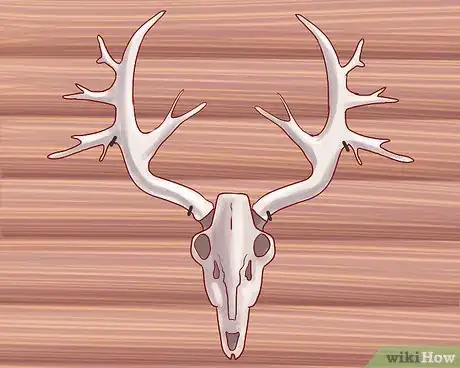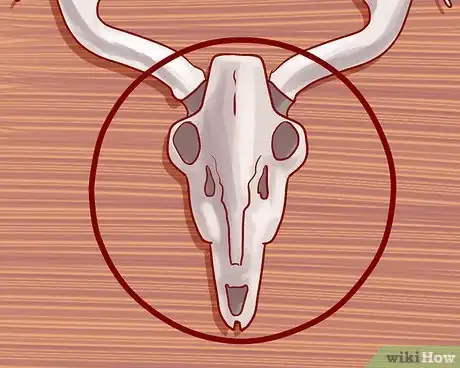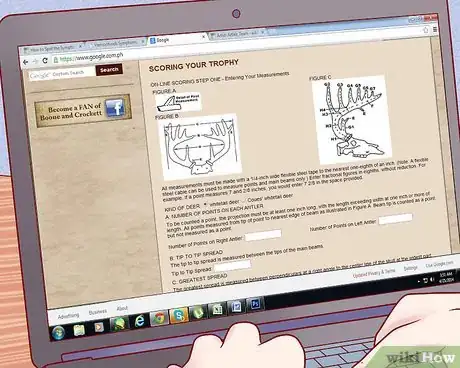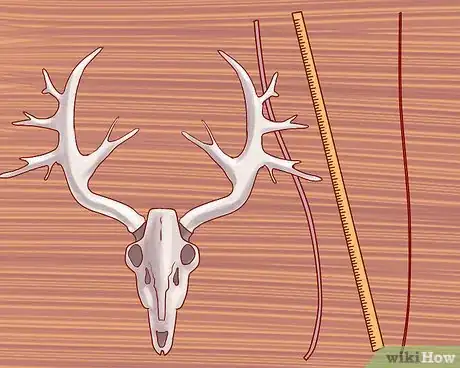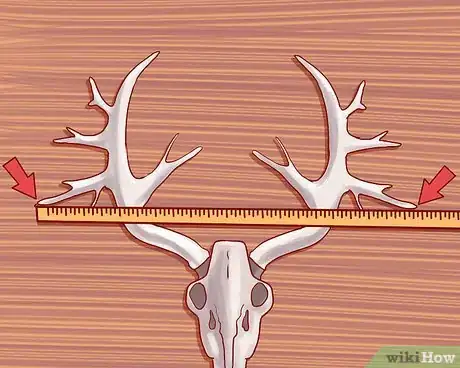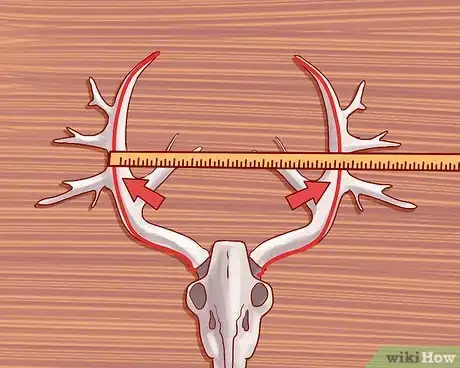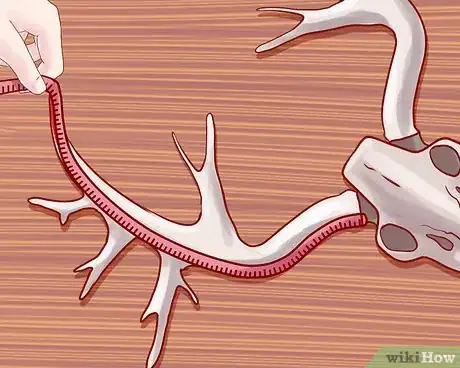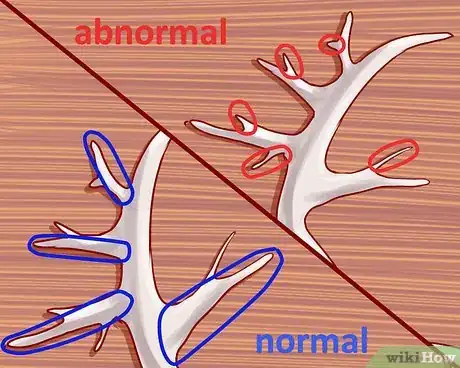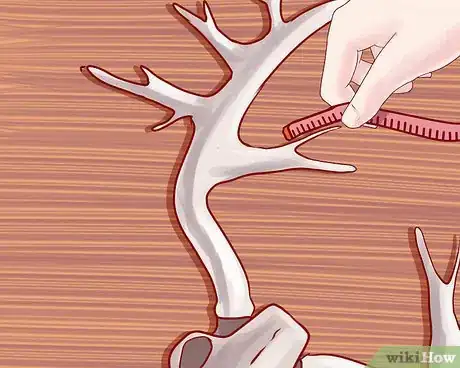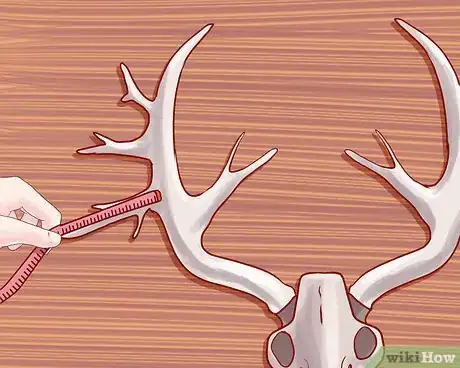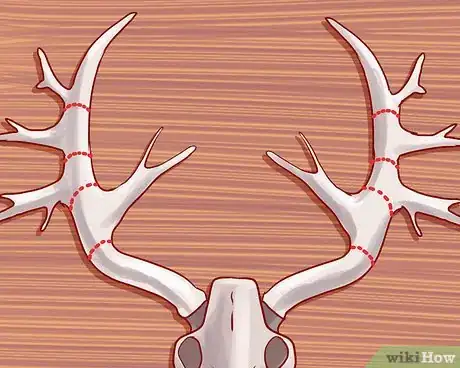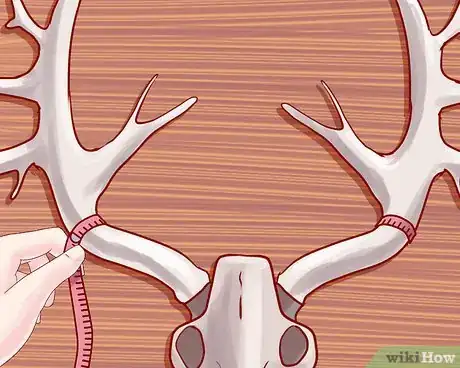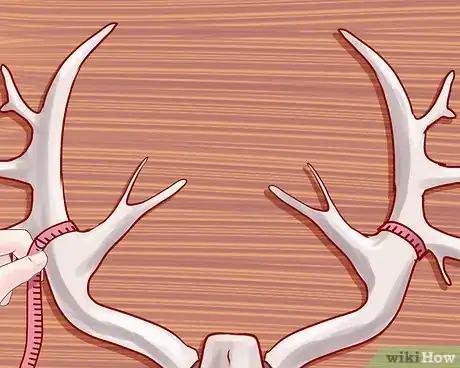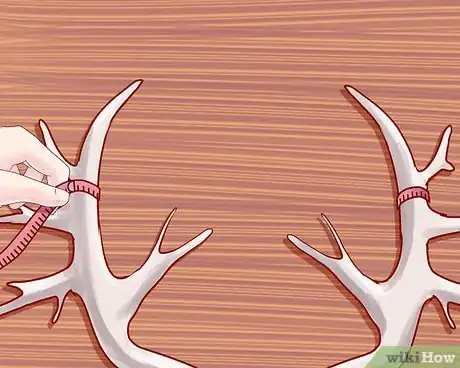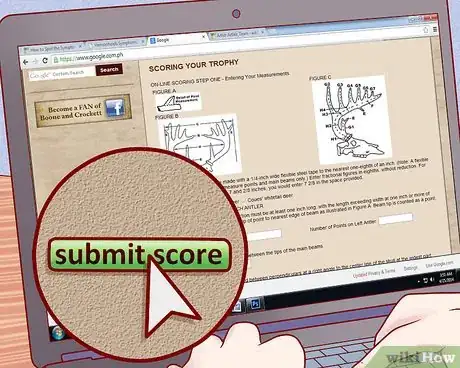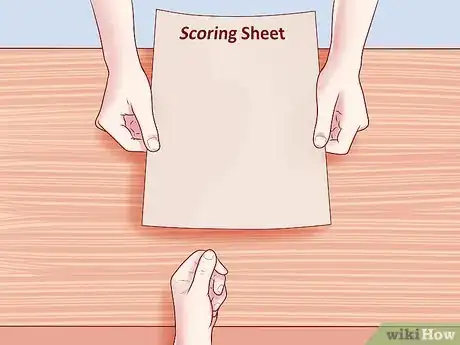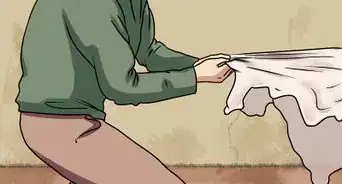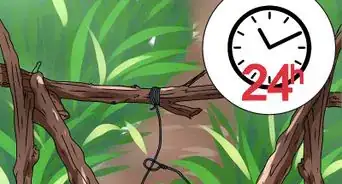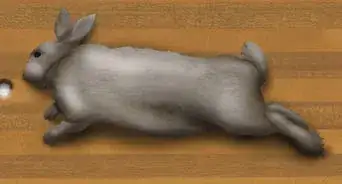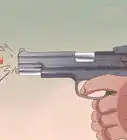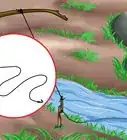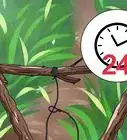X
wikiHow is a “wiki,” similar to Wikipedia, which means that many of our articles are co-written by multiple authors. To create this article, volunteer authors worked to edit and improve it over time.
This article has been viewed 206,913 times.
Learn more...
Measuring whitetail deer antlers determines how significant a hunt was before you mount the rack. In some cases, it can lead to awards for exceptional hunting. The Boone and Crockett scoring system has been the template for most other scoring systems, so you should start by taking these spread, point and circumference measurements.
Steps
Part 1
Part 1 of 4:
Preparing to Score Antlers
-
1Air-dry your buck’s antlers for 60 days or more.[1]
-
2Ensure the skull plate is intact and it has not been artificially replaced or repaired. Your antlers can’t receive an official Boone and Crockett score in this condition.[2]Advertisement
-
3Make sure your whitetail deer hunt follows the fair game laws of your state. Unfair chase makes your antlers ineligible to be officially scored.
-
4Request a scoring sheet from your state’s Fish, Wildlife and Parks department. You can also go directly to the Boone and Crockett website if you’d rather receive your official score by the club. Go to www.boone-crockett.org/bgrecords/bc_scoring_typwhitetail.asp?area=bgRecords&type=Typical+Whitetail+Deer.
-
5Place your antlers, your measuring tape, yardstick and steel cable on a table. The skull plate should be sitting on your table so that you can take horizontal and vertical measurements of the rack. You will need to take all measurements to the nearest one-eighth inch.[3]
Advertisement
Part 2
Part 2 of 4:
Measuring Spread
-
1Measure the tip-to-tip spread with your measuring tape. This is the distance between the tip of the right antler and the tip of the left antler. Take the measurement from the front of the antlers.[4]
- Write down all your measurements on your score sheet or using the Boone and Crockett Club online form.
- This is usually a small measurement because the main beams reach toward each other in the middle of the rack.
-
2Find the greatest spread. This is the distance between the widest point of the left antler to the widest point of the right antler. This horizontal measurement can be taken along any point of antlers along the main beam.[5]
-
3Locate the inside spread of the main beams. Measure the horizontal distance between the widest curve of the main beam on each side.
-
4Calculate the length of the main beam. Start at the burr, where the antlers meet the skull. Twist your flexible measuring tape so that it follows the center of the lowest outside edge of the main beam over the outer side to the end of the main beam.[6]
- Start with the right antler and then do a separate measurement for the left antler.
- Antlers are not perfectly symmetrical.
Advertisement
Part 3
Part 3 of 4:
Measuring Points
-
1Distinguish the normal points from abnormal points. Typical/normal points are those extending from the top of the main beam. Abnormal points can extend from the main beam near the burr.[7]
-
2Total up the lengths from base to tip of each abnormal point on the right antler and on the left antler. This should be fairly easy and short unless your deer’s antlers are extremely abnormal.[8]
-
3Measure each normal point on the right antler. The Boone and Crockett Club scoring sheet has places for up to seven points, although few deer will have that many. Repeat with the points on the left antler.[9]
- Each point will have a separate box in which to write the measurement.
Advertisement
Part 4
Part 4 of 4:
Measuring Circumference and Finishing
-
1Determine the circumference points for your antlers. This is the narrowest point between one location and another. Use a flexible measuring tape to wrap in a circle around that point, or use a flexible steel cable and then lay it out across a yardstick to determine the measurement.[10]
-
2Wrap your flexible measuring tape around the area between the burr and the first point of the right antler. Make sure you are choosing the narrowest point. Repeat on the left.
-
3Measure the circumference of the narrowest portion between the first and second points. Do the right and then the left.[11]
-
4Measure the circumference between the second and third points on both sides.[12]
-
5Determine the circumference between the third and fourth points on both sides.[13]
-
6Submit the form on the Boone and Crockett Club website or total the points according to your form. Confirm that you have followed fair game rules when hunting the deer.
-
7Receive an official score from the Boone and Crockett Club. In order to be entered into their awards program, you will need to contact a local Boone and Crockett Club and have an Official Measurer score your antlers.[14]
- You can also submit your score to your state agency for special consideration or awards.
Advertisement
Community Q&A
-
QuestionDo I use the tip-to-tip measurement?
 Community AnswerYou can, but it is not necessary to use the tip to tip measurement, you will really only need the inside spread, and the measurement of all the tines.
Community AnswerYou can, but it is not necessary to use the tip to tip measurement, you will really only need the inside spread, and the measurement of all the tines. -
QuestionShould I add tip to tip and the inside spread to the final score?
 Community AnswerYes. You need to do tip to tip with the inside spread, and the measurement of all the tines.
Community AnswerYes. You need to do tip to tip with the inside spread, and the measurement of all the tines. -
QuestionWhy do you air dry for 60 days before scoring?
 Community AnswerIt will allow the antlers to "dry out" and shrink to their smallest size. That way, all antlers are being measured in the same state. A "green" antler that is fresh out of velvet will have greater size than a dry antler.
Community AnswerIt will allow the antlers to "dry out" and shrink to their smallest size. That way, all antlers are being measured in the same state. A "green" antler that is fresh out of velvet will have greater size than a dry antler.
Advertisement
Things You'll Need
- Deer antlers
- 1/4-inch steel measuring tape
- Flexible steel cable
- Yardstick
- Scoresheet
- Pencil
References
- ↑ https://www.boone-crockett.org/bgRecords/records_policies.asp?area=bgRecords
- ↑ https://www.boone-crockett.org/bgRecords/records_policies.asp?area=bgRecords
- ↑ https://www.boone-crockett.org/bgRecords/records_policies.asp?area=bgRecords
- ↑ https://www.boone-crockett.org/bgRecords/records_policies.asp?area=bgRecords
- ↑ https://www.boone-crockett.org/bgRecords/records_policies.asp?area=bgRecords
- ↑ https://www.boone-crockett.org/bgRecords/records_policies.asp?area=bgRecords
- ↑ https://www.youtube.com/watch?v=CIPEda9rwrI
- ↑ https://www.realtree.com/deer-hunting/articles/how-to-score-a-buck-on-the-boone-and-crocket-scale
- ↑ https://www.realtree.com/deer-hunting/articles/how-to-score-a-buck-on-the-boone-and-crocket-scale
- ↑ https://www.boone-crockett.org/bgRecords/records_policies.asp?area=bgRecords
- ↑ https://www.boone-crockett.org/bgRecords/records_policies.asp?area=bgRecords
- ↑ https://www.boone-crockett.org/bgRecords/records_policies.asp?area=bgRecords
- ↑ https://www.boone-crockett.org/bgRecords/records_policies.asp?area=bgRecords
- ↑ http://www.boone-crockett.org/bgRecords/ScoringYourTrophy.asp?area=bgRecords
About This Article
Advertisement
